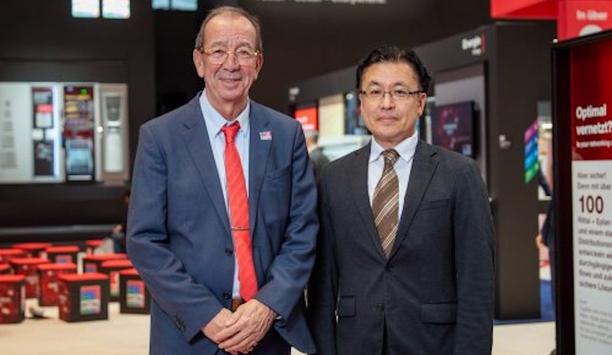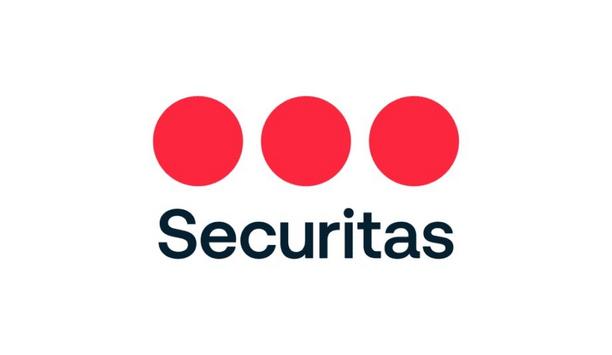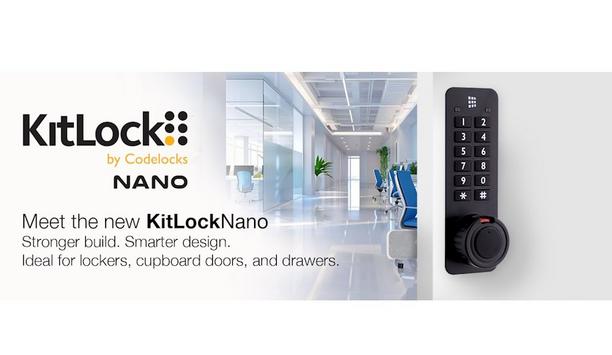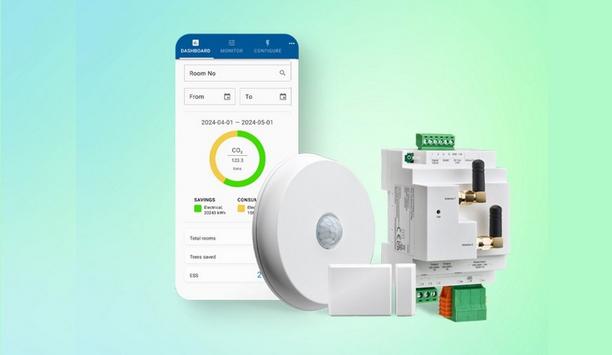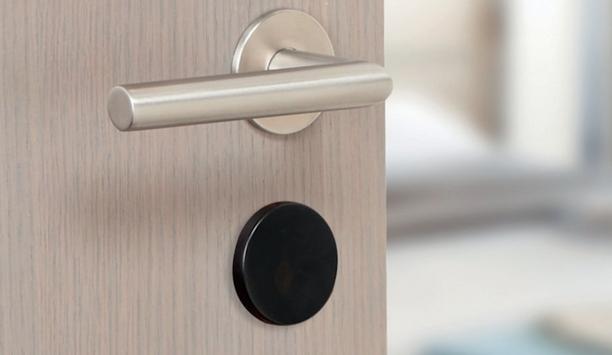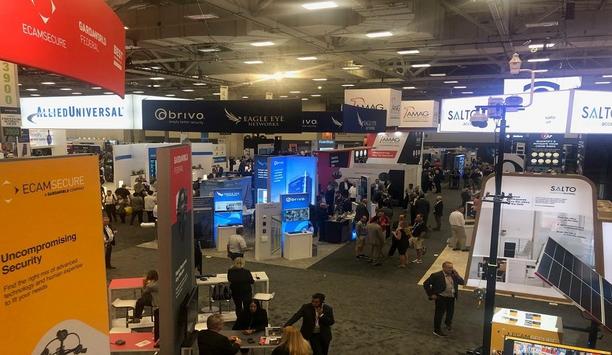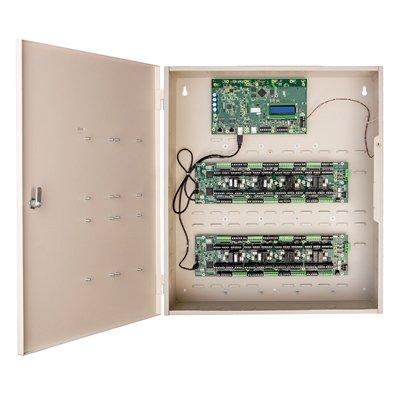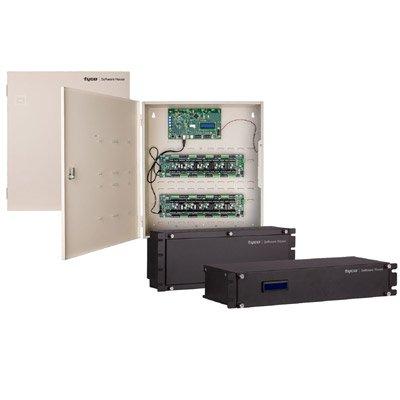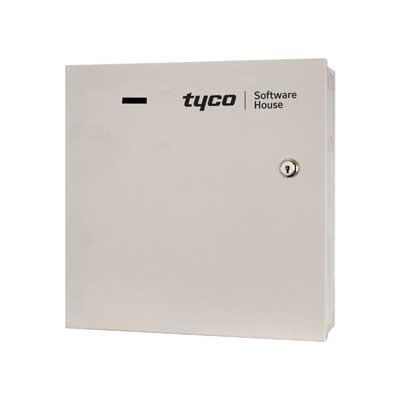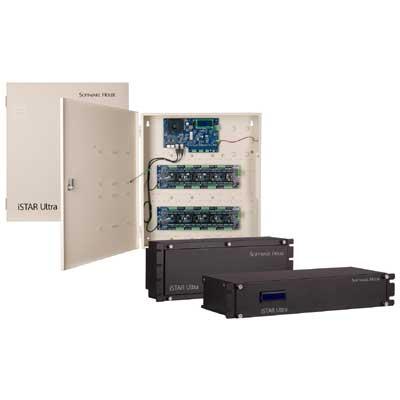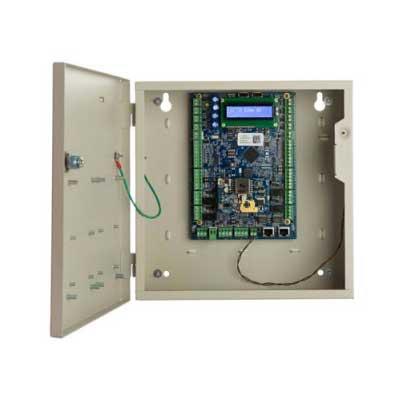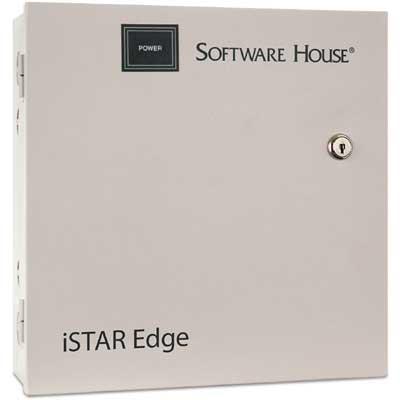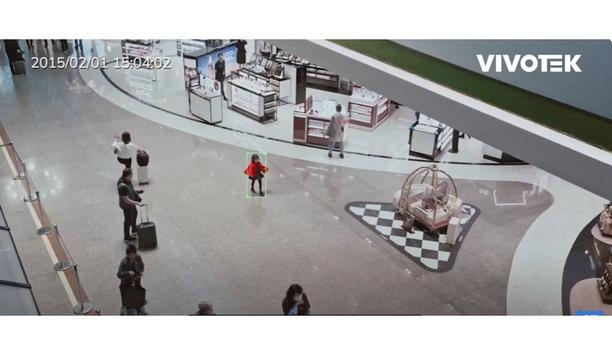Security access systems
Alcatraz, the pioneer in facial biometric authentication for physical access, now announced the successful completion of its SOC 2 examination as of November 7, 2025. The independent audit was conducted by A-LIGN, the pioneering provider in cybersecurity compliance trusted by more than 4,000 global organizations. Biometric access with confidence “Trust in biometric systems depends on strong data stewardship,” said Tina D’Agostin, CEO of Alcatraz. “At Alcatraz, we work...
The contract was signed, live at the SPS in Nuremberg, Germany: CADENAS is now the newest member of the Eplan Partner Network. CADENAS Managing Director Terry Jonen and Eplan Managing Director Haluk Menderes signed the new technology partnership agreement on 26 November 2025. The stated goal of the cooperation is the expanded provision of technical device data via the Eplan Data Portal, which will be implemented using a direct interface between the Data Portal and the CADENAS platform 3Dfi...
Allied Universal®, a pioneering security and facility services provider, now announced that it has sold a majority stake in AMAG Technology to Shore Rock Partners, a critical infrastructure-focused growth investor. AMAG is a pioneer in integrated high-security access control, identity, guest, and video management solutions. The new ownership group led by Shore Rock Partners with strategic backing from BellTower Partners will continue to support enhancements to AMAG’s product portfolio...
A seamless building benefits everyone, users and facilities managers alike. With streamlined interactions which start at the front entrance and continue through the site, workflows become more efficient and every stakeholder enjoys greater peace of mind. Most organizations already recognize the importance of connecting access with security systems like alarms and CCTV, as well as HVAC and a growing range of business software packages. To connect systems even further, security managers need comp...
Alarm.com and Everon, LLC, a pioneering security integrator and premier provider of commercial security, video, fire, and life safety solutions, today announced a strategic partnership to deliver a unified console for Everon customers to manage integrated intrusion protection, access control, remote video monitoring, and business management solutions. The partnership reflects the growing demand for integrated commercial security platforms that can easily connect with existing infrastructure whi...
Integrated access control and security manufacturer TDSi now announces that from 1st January 2026, it will operate under the new name: TDSi by Hirsch. The change follows the global transformation of its parent company, Vitaprotech, into the Hirsch Group, unifying its security brands worldwide under one trusted name. TDSi’s integrated access control For more than 40 years, TDSi’s integrated access control solutions have been at the heart of thousands of installations&nbs...
News
Securitas Technology, a world pioneer and global provider of security, health, and safety technologies, is proud to announce the acquisition of Sonitrol Ft. Lauderdale and Level 5 Security Group. This strategic move reinforces Securitas Technology’s commitment to delivering client-centric solutions and expanding its geographic footprint to better serve clients across North America. Best-in-class security solutions “This acquisition aligns with our focus and commitment to deliver best-in-class security solutions while keeping our clients at the center of everything we do,” said Tony Byerly, Global President and CEO, Securitas Technology. “We are proud to welcome the talented Sonitrol Ft. Lauderdale and Level 5 Security Group team to Securitas Technology and look forward to creating added value for our clients across Florida.” Expanded service coverage in Florida This acquisition expands Securitas Technology’s service coverage in the state of Florida, strengthening local operations for both new and existing clients. By combining resources and expertise, we are positioned to deliver a superior client experience throughout the region. “Expanding our presence in Florida allows us to deliver stronger local coverage while also enhancing our support of regional and national clients in the region,” said Byerly. "This partnership leverages unique capabilities like Sonitrol's CORE cloud platform alongside Securitas Technology's expansive resources." Cloud-based Sonitrol offering for clients Securitas Technology now expands Sonitrol’s new cloud-based offering to both new and existing clients, delivering greater flexibility, scalability, and remote management capabilities. This next-generation solution ensures businesses can access Sonitrol’s proven audio verification technology through a secure, cloud-enabled environment—enhancing operational efficiency and peace of mind. With a legacy of innovation spanning over 60 years, Sonitrol has pioneered advancements such as reducing false alarms and enhancing verified response. Level 5 Security Group brings over four decades of expertise in delivering cutting-edge integrated electronic security solutions across South Florida. Together, Securitas Technology, Sonitrol Ft. Lauderdale and Level 5 Security Group, will help make the world a safer place.
Global security manufacturer Gallagher Security is proud to announce a strategic partnership with Fortified Security, a pioneering perimeter systems integrator with over 30 years of specialized experience. This collaboration enables Gallagher’s Channel Partners across the Americas to offer enhanced perimeter security solutions to their customers, supported by Fortified’s expert design and installation services. Long-term client relationships This partnership empowers Gallagher Channel Partners to expand their service offerings, meet broader customer needs, and strengthen long-term client relationships. By engaging Fortified as a trusted subcontractor, Channel Partners who do not currently provide perimeter installation services can confidently deliver complete, integrated security solutions—reducing the risk of losing business to competing providers. Complete security infrastructure Natalie Bannon, Director of Strategic Alliances at Gallagher Security, says this partnership is a powerful way to help Gallagher’s Channel grow: “This partnership enables Channel Partners to expand their capabilities by offering Gallagher’s industry-pioneering perimeter security solution to both new and existing clients." "By partnering with Fortified, Channel Partners can better serve their customers through the design, installation, and integration of another critical component of a complete security infrastructure.” Install perimeter solutions Fortified President, Chase Cary, adds that the collaboration is built on a shared commitment to partnership and protection: “Gallagher, the Channel Partner, and the Fortified team each play a vital role in making this possible." "Our ultimate goal is to make end-users and their organizations safer — and stronger — because of it. We’re excited to come alongside Channel Partners, learn about their clients’ unique needs, and design and install perimeter solutions that directly address those challenges.” Fortified’s specialized integration capabilities Through this collaboration, Gallagher reinforces its commitment to supporting Channel Partners with the tools, resources, and expertise needed to drive mutual growth. By combining Gallagher’s world-class perimeter technology with Fortified’s specialized integration capabilities, Channel Partners are now better equipped than ever to deliver complete, end-to-end security solutions.
Codelocks launches its KitLockNano, a redefined compact lock, engineered with a stronger build and smarter design. The upgraded lock delivers improved performance and functionality in the same ultra-small footprint as the original, while including a key override for complete control in any situation. Ideal for lockers, cabinets, and drawers, the KitLockNano addresses the growing demand for modern, reliable access control in environments like workplaces, sports facilities, and hotels. Reengineered to meet modern demands “The KitLockNano has been completely reengineered to meet modern demands. While it stays true to its compact form, everything else has been improved, from usability to durability,” said Jo Milne-Rowe, Managing Director at Codelocks. “On top of this, it provides the perfect balance between style and substance. We've created a lock that not only looks contemporary and sophisticated but also provides the flexibility end-user customers need for a range of different storage scenarios, thanks to its dual-function capability.” The KitLockNano’s Private Function allows repeated use of the same code for dedicated users, while the Public Function enables temporary four-digit codes that automatically erase after use. A red/blue LED indicator provides an at-a-glance locked/unlocked status. Dual functionality “Dual functionality means organizations using the KitLockNano in applications such as hot-desking offices, sports clubs, or events and conference spaces get more out of their locker and cabinetry solutions. The same lockers can be used as private storage or for short-term, multiple occupancy without having the hassle and costs associated with keys,” said Jo Milne-Rowe. Installing the KitLockNano is simple, as the lock easily retrofits into existing cam lock placements using just two additional fixings. New installations require only three small holes, allowing locksmiths and installers to fit the lock in minutes. It can be surface-mounted or fitted flush, maintaining a clean aesthetic while ensuring easy battery access. The key override remains accessible, making it simple for facilities managers to regain access if needed. It is also available in vertical or right-hand horizontal orientations. Makes maintenance and management easier The KitLockNano makes maintenance and management easier. Powered by two AAA batteries, it can perform up to 15,000 operations per battery cycle, includes a low battery indicator function, and has comprehensive code management with Master, Sub-Master and Technician. It is IP54 rated and equipped with a key override that is protected by a dust cover over the key cylinder. Part of the KitLock by Codelocks range, the KitLockNano is a convenient and stylish alternative to traditional key-operated locker locks.
MARCH has opened a new regional hub at Meadowhall Business Park in Sheffield, marking a major investment in Yorkshire’s growing economy and supporting the company’s continued expansion. The new site replaces the company’s former Chesterfield and Leeds offices, bringing teams together under one roof to create a collaborative environment designed for innovation, training and growth. With excellent transport links via train, tram, bus and road, the location provides easy access for staff and customers across the region. The modern facility includes dedicated meeting rooms and a large test space for hands-on technical work, all designed to enhance the employee experience and support delivery for customers. Significant investment “This move represents a significant investment in both our people and the region,” said Christopher Kehoe, CEO at MARCH. “Bringing our teams together in Sheffield gives us the opportunity to collaborate more closely, share ideas and strengthen our culture. It’s about creating an environment where talent can grow and where innovation happens naturally.” The new office reflects MARCH’s continued investment in people and capabilities across the North. Sheffield is recognized as a center of excellence for engineering and technology education, producing highly skilled graduates across a range of disciplines. Its strong academic base and established industrial links provide MARCH with access to a deep pool of technical talent, reinforcing the company’s commitment to developing digital expertise in the region. Newly launched digital apprenticeship program The Sheffield hub will also support the company’s newly launched digital apprenticeship program, which has been designed and fully funded by MARCH to address the national shortage of automation and control systems skills. Delivered through the MARCH Academy, the initiative provides a structured training route that blends academic study with practical application. Members of the 2025 apprenticeship intake will be based at the new office, combining academic study with hands-on project experience under the guidance of experienced mentors. Developing future-ready skills The program forms part of MARCH’s wider strategy to develop future-ready skills and create a consistent training pathway across its regional network. “We believe this investment allows us to serve our customers more effectively,” added Christopher Kehoe. “The Sheffield hub connects our expertise across the North, helping us deliver faster, more consistent results and giving customers direct access to the full range of our capabilities.” The opening of the Sheffield hub underlines MARCH’s ongoing investment in regional development, helping to create high-quality digital roles and supporting the wider local economy.
ASSA ABLOY has acquired International Door Products (“IDP”), a US manufacturer of standard and custom fire-rated steel door frames. "I am very pleased to welcome IDP to ASSA ABLOY. This acquisition delivers on our strategy to strengthen our position in mature markets through adding complementary products and solutions to our core business,” says Nico Delvaux, President and CEO of ASSA ABLOY. "This acquisition marks an exciting milestone for ASSA ABLOY Opening Solutions Americas as we welcome International Door Products Inc. into our family," says Lucas Boselli, Executive Vice President of ASSA ABLOY and Head of the Americas Division. Broader range of solutions "This acquisition allows us to offer an even broader range of solutions to our customers. IDP’s premium product portfolio and rapid lead times complement our existing capabilities, ensuring we can meet the evolving needs of construction markets with speed and excellence," continued Lucas Boselli. IDP was founded in 1977 and has some 80 employees. The main office and factory are located in Southfield, Michigan, USA. Sales for 2024 amounted to about MUSD 29 (approx. MSEK 300) with a strong EBIT margin. The acquisition will be accretive to EPS from the start.
Salto, a global pioneer in smart access solutions, announced the launch of XS4 Sense, an innovative Smart Energy Management System (SMES) designed to revolutionize energy efficiency in buildings. Combining cutting-edge wireless technology with real-time energy monitoring platform, XS4 Sense empowers building operators to reduce energy consumption, lower carbon footprints, and achieve sustainability goals – all without complex installations or invasive infrastructure upgrades. Building on Salto’s reputation for secure smart access solutions, XS4 Sense expands the smart access ecosystem technology portfolio by integrating real-time energy monitoring, advanced presence detection, and HVAC control into a compact, retrofit-friendly device. The wireless solution integrates seamlessly with Salto’s existing smart access ecosystem, including Salto Space and BLUEnet infrastructure, enabling rapid installation in operational hotels, workspaces, student dorms, cruise ships, and other properties. Energy efficiency and control Built to work together, designed for retrofit, and certified for sustainability, the XS4 Sense enables building operators to reduce energy consumption – without the need for complex wiring or new infrastructure. Energy savings: XS4 Sense provides energy savings at the individual room or space level, ensuring increased energy efficiency. Wireless and retrofit-ready: Designed for seamless retrofit, XS4 Sense eliminates the need for complicated setups or extra tools through its advanced wireless architecture, making installation quick and disruption-free. All-in-one smart controller: This wireless device integrates multiple functionalities into one compact module, including motion detection, door and window sensors, and HVAC control and is suitable for any room or space. Flexible placement: Whether installed on ceilings, under eaves, or on door and window frames, the non-invasive wireless sensor design enables a quick retrofit in live environments which is ideal for hotels, student housing, workspaces, healthcare labs, cruise ship cabins, and other property types. Seamless ecosystem integration: Works harmoniously with Salto’s smart access platform and is integrated to work with Salto Space, combining security, comfort, and energy efficiency into one smart access solution. Complements existing access control solutions The Salto XS4 Sense offers a unique opportunity to complement existing access control solutions and deliver a measurable sustainability impact. The system is ideal for retrofitting projects in operational environments such as hotels, student dormitories, offices, cruise ship cabins, and vacation rental properties. A powerful addition to Salto’s smart access ecosystem, the XS4 Sense delivers value for both existing customers and new developments seeking to align with sustainable building standards, ESG targets, and energy regulations. The system supports real-time monitoring and actionable insights, enabling operators to demonstrate measurable environmental impact and reduce long-term operational costs.


Expert commentary
The healthcare infrastructure is ever evolving. Facilities are no longer single entities for one, they are sprawling ecosystems that serve a wide range of users, from medical staff and administrators to vulnerable patients, visitors and maintenance personnel. Safeguarding their safety and security, while providing seamless operation is a complex challenge - one frequently solved by access control. Use of access control Today’s security solutions play a central role in protecting people and mitigating risk across much of our built environment. An appropriately specified system is effective at regulating, monitoring and restricting entry and exits, and allows users to navigate an integrated network and its hardware to ensure the right access is provided to the right person at the right time. In healthcare buildings, the use of access control expands further, whereby a system can tackle a host of unique operational challenges - significantly contributing to fire safety, ease of movement and the theft prevention of equipment, medicine and sensitive patient data, and all while protecting human life and preserving privacy and dignity. In healthcare buildings, the use of access control expands. In doing so, access control can become the cornerstone of functionality, compliance and organization in any healthcare environment. Though, as the complexity of projects deepen, decision makers are reminded that coordination is key. Preparing and empowering users Between January and March 2025, there were over 832,000 patient safety events recorded in the NHS. While each of these events may not be directly linked to building security specifically, the healthcare industry is faced with a considerable number of safety incidents, which suggests greater monitoring and mitigation is needed across the board. Access control often provides staff with the vital means of retaining control without impeding care Patient well-being and security will always remain paramount in the sector, and access control often provides staff with the necessary means of retaining control without impeding care. Hospitals for example, sustain a high level of footfall across large campuses with multiple points of entry and on-site patient record systems, presenting a number of simultaneous security tests as a result. Though, unlike other public buildings, where rigid security measures are active at all times, many healthcare environments must strike a balance throughout their security framework to meet a host of one-of-a-kind demands. Use of access credentials With a continuous influx of patients, staff and visitors, healthcare groups are habitually required to remain accessible and inviting around the clock. At the same time, they must also be prepared to deter unwanted visitors in areas of restricted access and lock down intensive wards to ensure patients remain safe and secure under periods of monitoring. For this, the use of access credentials is critical and provides a regulated system for sensitive staff-controlled areas such as pharmacies, wards, and server rooms. By applying role, zone, or schedule-based access, decision makers can authorize personnel seamlessly, empowering facilities to manage patient care without compromising security in the process. Use of access credentials is critical and provides a regulated system for staff. Implementation of AI-powered tools and devices Modern systems may incorporate the use of keycards, biometric scanners, and mobile credentials When it comes to the operation of these systems, training gaps are a concern, however. Over the five years up to February 2025, numbers of NHS doctors rose by 26%, with nurses also up 25%, and this influx of new staff requires education towards the usage of access control. Modern systems may incorporate the use of keycards, biometric scanners, mobile credentials and in some cases, voice-activation, with the implementation of AI-powered tools and devices set to play a more prevalent role in the future. Each system presents its own benefits and may be better suited to certain projects and areas, but without consultation and proper user education, they can instead become a barrier. Strategy, scalability, performance To alleviate these operational threats, early-stage planning is fundamental. Just as end-user education and training should be built into project timelines, it’s important to consider the growing need for cooperation throughout the entire supply chain of an access control project. A collaborative approach becomes even more critical when innovative solutions enter the market All too often, a lack of evidence-based decision making can hinder the specification of a scheme and its accompanying hardware, whereby choices are made without understanding long-term performance or compliance requirements. Whether approaching a new or retrofit development, ongoing communication allows experts to come together and ensure that product decisions are aligned with the buildings intended use and user base. This collaborative approach becomes even more critical when innovative solutions enter the market and new sector challenges arise. Latest access control products With this in mind, trusted manufacturers will no longer simply deliver the latest access control products, but will aim to work alongside the architects, specifiers, contractors, and facility managers at each stage of the building’s lifecycle to ensure touchpoints are addressed. This is crucial in modern healthcare environments, where the added layer of complexity requires tailored security measures. One area that is often neglected is scalability, for example. As healthcare facilities manage fluctuating patient numbers and a growing level of patient data, along with new regulations, systems must be adaptable and allow for ongoing improvements and updates to the security infrastructure without the need for a complete overhaul. By adopting a scalable system that combines technology integration with ease of use, decision makers can future-proof their building’s security. Manufacturers will no longer simply deliver the latest access control products Complexity of the healthcare industry In truth, access control has become more than a means of restricting access. Modern systems are more equipped than ever before to deliver environments that support care, safety, and operational excellence. Nonetheless, the complexity of the healthcare industry and its buildings demands more than product innovation - it requires an industry-wide commitment to collaboration, from project conception to product installation and beyond.
The sheer volume of smart locks, lock management systems, connected readers and an increasing array of Internet of Things (IoT) devices complicates the issuance and management of certificates that are foundational to establishing trust between a device and the credential used to access it. That’s why more companies are turning to PKIaaS for IoT devices. But there’s another reason to consider PKIaaS: the rise of quantum computing. Secure digital communications Gartner predicts that the pace of quantum computing will render asymmetric cryptography systems PKI certificates form the backbone of secure digital communications, but Gartner predicts that the pace of quantum computing will render asymmetric cryptography systems unsafe by 2029 and could render all current cryptography unsafe by 2034. As with any software implementation, there are pitfalls to avoid, including vendors that use proprietary technology that’s incompatible with other systems and “gotcha” pricing tactics where a slight increase in certificate usage triggers a massive increase in pricing. However, the time to implement PKIaaS is now. Physical security faces growing cyber threats Although ransomware attacks directly on computing infrastructure dominate business headlines, physical security systems are also under threat. An HID survey of over 1,200 security professionals, end-users and executives shows that 75% reported threats to their physical security systems in the past year, as these systems are more tightly integrated with company IT networks. Until recently, most physical access control systems (PACS) were proprietary and worked only on the specific systems they were designed to interact with. However, the movement toward open supervised device protocol (OSDP) revolutionized the field, allowing companies to integrate and control devices from different vendors while improving compatibility and security. PACS and IoT devices PKIaaS makes sense as the number of digital certificates needed to power PACS and IoT devices As a result, 40% of companies plan to either update or change access control systems in the next year, with 21% emphasizing the need for open standards like OSDP to both improve interoperability and future-proof their systems. When asked about reasons for a proposed upgrade, more than half cited convenience, while another 40% sought to improve their overall security posture. PKIaaS makes sense as the number of digital certificates needed to power PACS and IoT devices continues to increase, promoting security and reducing manual processes related to tracking certificates. Regulatory compliance demands automation and agility Companies also face increased regulatory pressures regarding technology in general — and certificates in particular. The European Union’s Cyber Resilience Act sets mandatory cybersecurity standards for manufacturers and retailers, covering the planning, design, development and maintenance of products throughout the entire value chain. Certain high-risk products must undergo third-party evaluation by an authorized body before being approved for sale in the EU. EU Cybersecurity Act shows a unified certificate framework for ICT products, services, and processes More specifically, the EU Cybersecurity Act establishes a unified certification framework for information and communications technology (ICT) products, services, and processes. Businesses operating in the EU will benefit from a “certify once, recognized everywhere” approach, meaning that approved ICT offerings will be accepted across all EU member states. Given the global nature of PACS, these regulations likely will impact companies well beyond the EU, much like the general data protection regulation on websites has. These changes, when considered together with rapid advancements in quantum computing, underscore the need for a unified certification solution such as PKIaaS to handle increased — and increasingly complex — certificate compliance. A path to PKI modernization Modernizing PKI through a PKIaaS model doesn’t have to be difficult. With a clear and phased approach, most organizations can transition smoothly while reducing risk and improving efficiency. It starts with a quick assessment of current certificate usage to understand where certificates are issued, how they’re renewed and any gaps in coverage. From there, it's about defining what you need and selecting a trusted partner. Look for a solution that integrates well with your existing systems, supports automation and scales as your needs grow. In terms of partners, not all PKIaaS vendors are the same. Look for one with a strong security track record and predictable pricing, which will simplify both onboarding and long-term management. When it comes to vetting vendors, ask the following questions: Is the solution scalable? The trend toward future-proof installations has never been greater. As the number of certificates increases, any PKIaaS solution must be able to grow in concert. How will pricing change as certificate volume grows? Some solutions are priced in tiers by the number of certificates. If a company exceeds that maximum by even a single certificate, it owes not only the price difference between tiers, but it will also be expected to pay for that tier the following year, which can bring a significant financial surprise. How are CAs accessed and stored? Look for companies that can provide long-term offline secure storage of certificates that can also track when CA keys are accessed. What support is included in the PKIaaS? Specifically ask vendors about up-front costs for implementation and onboarding to get a real apples-to-apples comparison among partners. Step-by-step replacement of manual processes A pragmatic approach allows corps to move quickly and confidently from legacy PKI to a scalable Once a vendor in place, start with a focused rollout, e.g., automating certificate renewals for internal systems or a specific business unit. Once the pilot is complete, expand automation with a step-by-step replacement of manual processes to limit operational disruptions. Finally, as PKIaaS becomes embedded in day-to-day operations, it’s important to align it with broader security governance. Establishing regular reporting and clear policies, as well as future-proofing for quantum-safe cryptography to ensure long-term resilience and compliance without adding complexity. This phased, pragmatic approach allows organizations to move quickly and confidently from legacy PKI to a scalable, secure and future-ready solution. A necessary upgrade According to an analyst report, manual certificate management can cost organizations up to $2.5 million annually in labor and outage-related expenses. While automation reduces these costs by up to 65%, the real challenge in IoT environments lies in managing scale. With device lifecycles often spanning decades and certificate volumes reaching millions — especially across distributed, resource-constrained endpoints — manual PKI processes and legacy infrastructure simply can't keep up. The convergence of regulatory mandates, quantum computing threats and rising cyber risks to connected physical systems makes scalable, cloud-based PKIaaS not just a strategic advantage, but a foundational requirement for secure IoT deployments.
In today’s world, almost any electronic security system holds the potential to become a gateway for cybercriminals. With physical security and cybersecurity increasingly entwined, security professionals aren’t doing their job unless they take all possible precautions to lock down unauthorized access to camera systems, access control platforms, intercoms, and other network-based security devices and solutions. Let’s explore the many steps companies should take throughout their security technologies’ lifecycle – from choosing a vendor all the way through device decommissioning – to avoid making the common mistakes that leave systems, and the networks they reside on, vulnerable to attack and sabotage. Prepurchase Phase: Laying the Groundwork for Cybersecurity 1. Conduct a Vendor Risk Assessment IT departments often rely on the same Vendor Risk Assessment criteria they use for evaluating IT equipment manufacturers when considering the suitability of physical security vendors. While commonalities exist between how to assess these disparate solutions, there are also differences that require distinct scrutiny. For example, device endpoints within physical security systems run on custom Linux Kernels and therefore do not utilize standard Linux distributions like Red Hat, Ubuntu, or Debian. IT divisions often rely on the same Vendor Risk Assessment criteria they use for evaluating IT kit A comprehensive evaluation should examine how each security solutions manufacturer handles its software development life cycles. Ideally, vendors should adhere to a recognized framework when developing both their platform management and device-specific software. In 2021, Executive Order 14028 made it a bit easier for companies to evaluate vendors by providing guidelines for evaluating software security, the practices of the software developer, and methods to demonstrate conformance with secure practices, specifically referencing the NIST SP 800-218 Secure Software Development Framework. In short, a good vendor should have documentation that explains everything it’s doing to address cybersecurity from development, through releases and ongoing maintenance. 2. Obtain Software Update Schedules The frequency with which manufacturers update their software varies. Each company is different. If you’re their customer, it shouldn't matter whether the vendor schedules updates every six months, three months, or more often than that. What does matter is that you know what to expect and have a plan for how to deal with that reality. For example, if updates only occur every six months, under what conditions are patches released to address vulnerabilities that emerge between updates? Customers must understand how often they'll be updating the software on their devices and ensure they have the resources to make it happen. Make sure stakeholders agree, upfront, who will be performing the software updates. Will it be the integrator who installed the system, the physical security system staff, the IT team, or the end user? Keeping an entire system current is a huge challenge, but a non-negotiable responsibility. Manufacturers who don't issue frequent releases and patches put the onus on customers to handle mitigation efforts on their own. In these instances, IT departments must be prepared to employ network segmentation, firewalls, security whitelists/blacklists, and other methods to protect their systems until a patch is released. If a company's security team has typically updated firmware only when something breaks, these additional responsibilities most likely require greater collaboration with IT departments and a shift in how security systems are managed. 3. Know the Warranty Terms and Duration of Software Support Organizations should understand the warranty policies for the devices they purchase Organizations should understand the warranty policies for the devices they purchase. Even more important is knowing when a device's software support will expire. Software support should extend well beyond hardware coverage. For example, if a camera has a five-year hardware warranty, customers should reasonably expect an additional five years of software support. When that period ends, companies must plan on replacing the device – even if it still works well. Without software updates, the device lacks vulnerability support and becomes too risky to remain on the network. Manufacturers should be transparent about their warranty and software support policies, helping organizations plan for device replacements that align with cybersecurity needs. 4. Request a Software Bill of Materials (SBOM) During the pre-discovery process, customers should request a Software Bill of Materials (SBOM) that provides a detailed inventory of the software running on each device, including open-source components. By revealing what software is "under the hood," the SBOM allows IT departments to be vigilant in protecting the company's systems from exposed vulnerabilities. For example, a customer should understand how Transport Layer Security (TLS) is being handled to secure a security solution's web server if it’s an open-source component like OpenSSL. 5. Assess Vulnerability Disclosure Practices CNA manufacturers represent the gold standard in cybersecurity practices Understanding how a manufacturer handles vulnerabilities is essential. Ideally, they should be a Certified Naming Authority (CAN) and report common vulnerabilities and exposures (CVEs) to national vulnerability databases such as NIST and MITRE. Doing so automatically includes any disclosed vulnerabilities associated with their devices in vulnerability scanners' databases. CNA manufacturers represent the gold standard in cybersecurity practices, but most security manufacturers do not reach this level. At a minimum, the vendors you choose to work with should have an email notification system in place to alert customers to new vulnerabilities. Remember – email notifications are only as reliable as the employees managing them, so investigate whether the manufacturer has a strong track record of keeping up with such communications. Ask to speak with customer references who have been using the solution for an extended period to ensure the vendor is diligent in its communications. Configuration Phase: Ensuring a Secure Setup 1. Use Hardening Guides Once a device is purchased, configuring it securely is the next critical step. Manufacturers should publish hardening guides that detail the security controls available for their products and recommended practices for implementation. Between the features offered by the vendor and your company's own cybersecurity policies, make sure all possible encryption options are activated. Using HTTPS is vital for ensuring secure communication with devices. Many physical security devices default to HTTP to accommodate customer-specific network topologies and certificate management. Failing to implement HTTPS can leave sensitive metadata unencrypted and vulnerable to interception. 2. Consider Advanced Encryption Protocols Protocols are necessary to protect video data in transit from cameras to the VMS Some solutions offer built-in encryption protocols, like MACsec, which makes it impossible for data to be compromised as it is transmitted over the network. HTTPS is still necessary to secure the connection to the devices’ webservice, but while customers set up and configure their devices, MACsec will keep network data safe. Additionally, if you want to encrypt video streams, consider protocols such as Secure Real-Time Transport Protocol (SRTP), which secures the transmission of audio and video data over the Internet, or tunneling methods like Secure Socket Tunneling Protocol (SSTP), which encapsulate data packets for safe transmission between two points, even if the network is insecure. Such protocols are necessary to protect video data in transit from cameras to the Video Management System (VMS). Encryption should also extend to the VMS hard drive where video is stored. There are different methodologies to do that, but ultimately the goal is to encrypt data in transit and in storage. 3. Implement Remote Syslog In the case of a breach, each device maintains a set of logs that are useful for forensic investigations. However, if a device gets hacked, its log may not be accessible. Best practices dictate that companies should set up a remote Syslog server that maintains a copy of all device logs within a central repository. In addition to providing redundant data for investigations, a Syslog offers IT systems an efficient way to look for anomalies. Cybersecurity teams will receive immediate notification for events like unsuccessful login attempts so they can quickly figure out what's happening. Who is trying to log in? Why on that particular device? 4. Practice Healthy Password Hygiene Ideally, organizations should move towards using Active Directory or Single Sign-On (SSO) solutions One of the most basic and yet overlooked aspects of cybersecurity is the failure to manage user accounts meticulously. Many organizations use the same username and password for all security devices because it's simply too cumbersome to manage a network of devices in which each requires a separate, unique login. It's assumed that the system's primary administrators are the only ones who know the universal password. However, the system becomes vulnerable if anyone within this select group leaves the company and the password isn't changed or deleted right away. Ideally, organizations should move towards using Active Directory or Single Sign-On (SSO) solutions. This approach ensures that employees throughout a company are each assigned a unique login credential that they use for any systems they use throughout the organization. When they leave, their passwords and access are universally terminated along with their accounts. If SSO is not an option, regular password changes and prompt account deactivation are critical. Decommissioning Phase: Securely Retiring Devices At some point, physical security devices will reach the end of their useful life. When that time comes, companies must take care in how they dispose of their devices. A good vendor will provide guidance on how to clear memory chipsets and restore factory defaults. Improper decommissioning can lead to severe risks. For example, if an improperly decommissioned device is sold on the secondary market or retrieved from a dumpster, an attacker could gain access to sensitive network configurations and use this information for malicious purposes. Conclusion Deploying physical security solutions involves more than just securing buildings and assets; it also requires robust measures to protect against cybersecurity threats. From assessing vendors and understanding update policies to configuring devices securely and managing decommissioning processes, each step presents potential pitfalls that, if overlooked, could expose organizations to significant risks. By incorporating the techniques discussed into their deployment protocols, organizations can ensure their physical security solutions provide comprehensive physical and digital protection.
Security beat
AI has the potential to enhance the usability of traditionally complex access control and physical security systems. The application of AI (artificial intelligence) within access control is still relatively new, but rapid advancements in generative AI are already transforming how security systems operate. acre security is driving the deployment of generative AI in access control through its acquisition of REKS earlier this year. REKS is a purpose-built generative AI solution designed specifically for acre’s access control platform. Unlike generic AI tools, REKS understands both system and security-specific terminology, allowing users to ask natural-language questions like, “Show me all access denied events at a specific location,” and receive instant results. AI workflows and AI agents “We're starting to see how AI workflows and AI agents, that leverage language models, can potentially be used in conjunction with access control to create new, automated processes around false alarm reduction, system configuration, report generation, data analysis, threat detection, and in-system customer support,” says Adam Groom, Director of Business Development, AI Development Team, acre security. “We expect AI-driven capabilities to evolve rapidly, but the full range of benefits will depend on continued development and real-world application,” he adds. Integrate AI-driven capabilities acre’s ability to integrate AI-driven capabilities across the company’s product portfolio positions The best way to think of REKS is as an acre access control expert you can talk to, says Groom. “As AI adoption grows in security, REKS will expand its capabilities, making access control more usable and more efficient.” Groom says acre’s ability to integrate AI-driven capabilities across the company’s product portfolio positions the company as a pioneer in next-generation physical security. “These features will add long-term value by enhancing usability and operational insights across various segments,” says Groom. “Work is already under way to incorporate REKS into acre access control, and we’ll evaluate other integration opportunities in the future.” REKS' AI capabilities According to acre, REKS simplifies daily operations, automating routine tasks, and delivering real-time, actionable intelligence. With REKS' AI capabilities, users can interact with the system to retrieve more detailed insights and actionable information from their acre access control system. “This eliminates the need for complex reports, navigating drop-down menus, or manually reviewing logs,” says Groom. “It significantly enhances efficiency and usability for security professionals.” Enhancing productivity and customer satisfaction Key concern is ensuring that system configuration, enactment, and servicing remain within their scope For integrators, the key concern is ensuring that system configuration, implementation, and servicing remain within their scope of expertise. With REKS, that doesn’t change — but the process becomes significantly faster and more efficient. Instead of manually configuring every panel, input, and output — a traditionally time-consuming task — REKS enables integrators to use natural language commands to streamline setup and adjustments, says Groom. This eliminates tedious steps and dramatically improves operational efficiency, allowing integrators to deploy and fine-tune systems with greater speed and accuracy, ultimately enhancing both productivity and customer satisfaction, he adds. Cloud-enabled ecosystems “We are committed to helping organizations modernize their security infrastructure by transitioning from legacy systems to cloud-enabled ecosystems at their own pace — ensuring minimal disruption while maximizing value,” says Groom. “By integrating AI-driven capabilities, we enhance usability and deliver deeper operational insights across all segments.” “Security’s future isn’t about forcing change — it’s about empowering choice,” adds Groom. “Whether staying on-prem, migrating to the cloud, or adopting a hybrid model, we plan to provide a seamless, zero-disruption transition, prioritizing interoperability, automation, and security at every stage.” Generic AI tools AI must be purpose-built for security applications because security demands precision, reliability, and context-aware decision-making, which only focused AI offerings like REKS bring to the table, says Groom. In contrast, generic AI tools, like ChatGPT, are designed to perform a wide variety of tasks, like how humans can learn and do many different things. Instead, purpose-built AI is built to do just one specific function. “REKS adds specially designed artificial intelligence to our access control solutions to enhance both intelligence gathering and the user experience,” says Groom. New applications in access control The integration of generative AI into acre's access control platforms and their broader portfolio A new AI development team will lead AI initiatives at acre, driving the integration of generative AI into acre's access control platforms and their broader portfolio. This team will seek to push boundaries in applying AI to new applications in access control, intrusion detection, and beyond, empowering security professionals to interact with their systems in a smarter, more intuitive way. But don’t worry, AI will not take the human element out of security entirely. AI human capabilities “The reality is that AI will improve upon human capabilities because it is a versatile tool that supports and strengthens security operations, not a replacement for human decision-making,” comments Groom. “It helps operators process large amounts of data quickly and detect patterns that might be missed otherwise.” Rather than removing the human element, AI allows security teams to work more efficiently by automating repetitive tasks and providing actionable data, enabling professionals to focus on critical responsibilities.
Active shooter situations grab the most attention, but there is a long list of other threats facing schools, including bullying, vandalism and emergency medical situations. Broadly speaking, a comprehensive approach to school security should prioritize prevention, preparedness and response to all threats. Holistic security approach “Fostering a culture of safety within a school, which involves strong relationships, trust, and communication, is highly effective and does not require significant costs,” says Christin Kinman, End User Sales Consultant with Allegion, a security manufacturer. “It is crucial to educate stakeholders about the unintended consequences of quick fixes, like barricade devices, to ensure informed decision-making and a holistic security approach. The goal should be to promote safety and security for all, every day, in every situation.” Integrated and successful security plans While this might solve a particular challenge, it can also create unintentional conflicts" "Creating an integrated security plan requires a multi-faceted approach," says Kinman. "Too often, security measures are implemented as a reaction to either an event or a specific vulnerability. While this might solve a particular challenge, it can also create unintentional conflicts," adds Kinman. “Creating a successful security plan involves a comprehensive approach,” she says. “An effective, systematic approach begins with assessing, identifying, and valuing assets, identifying threats and vulnerabilities, quantifying the impact of a loss, analysis, and prioritization, and finally, development of mitigation measures.” Safety and Security An effective resource is the Partner Alliance for Safer Schools (PASS), which provides a framework to help with school assessments, including identifying and valuing assets, identifying external threats and internal vulnerabilities, assessing the impact of loss, and analyzing and prioritizing mitigation measures. Safety and security are words used seemingly interchangeably when it comes to schools, but they mean different things. “How we define these terms influences planning and addressing challenges,” says Kinman. “It is easiest to think of these terms as being either external or internal to the individual.” Coordinated security Safety is internal to the individual and relates to the individual’s perception of being free from harm Security is external to the individual and encompasses the protective physical, emotional, and environmental measures implemented in conjunction with policies, procedures, and training, as well as mental health measures and social and emotional learning. Safety is internal to the individual and relates to the individual’s perception of being free from harm or danger. Coordinated security measures create an environment of safety. Four main elements of physical security Kinman lists four main elements of physical security, often referred to as the 4D’s. These elements are deter, detect, delay, and deny: Deter refers to measures implemented to prevent an attack or threat from happening. These are usually visual deterrents that communicate legitimate use. Detect refers to measures that can detect the presence of a threat, such as video surveillance and monitoring. Delay refers to measures that slow down an attack or increase the level of effort needed for an incident to occur. Finally, deny refers to measures that prevent or restrict access to valued assets. Four layers of ground perimeter A layered approach to school security creates “layers” that must be defeated for an event to occur, says Kinman. Typically, the four layers are the ground perimeter, the private grounds around the building, the building perimeter, and the building interior. The ground perimeter layer demarcates public vs private space, and deterrence is the primary objective. The grounds layer allows for identification of legitimate vs illegitimate users and detection is the primary objective. The building perimeter layer prevents illicit users’ intent on harm from gaining access. The primary objectives at this layer are delay/deny. The building interior protects the most valuable assets, and the denial of an unauthorized individual is the primary objective. Report on Indicators of School Crime and Safety The second element is impact, also rated on a scale of 1-5 and ranging from negligible to catastrophic “Quantifying loss and assessing risk is one of the most important steps in creating an integrated security plan,” says Kinman, who explains that the two elements that guide this step are probability and impact. Probability is the likelihood that an event will occur, typically rated on a scale of 1-5 ranging from rare to almost certain. The second element is impact, also rated on a scale of 1-5 and ranging from negligible to catastrophic. “Probability multiplied by impact equals risk, which has a score ranging from 1-25,” says Kinman. “The higher the score, the higher the risk.” An analysis of vulnerabilities and threats using a matrix yields a systematic approach to prioritize improvements and identify mitigation measures. For statistics on crime and safety in schools, visit the Report on Indicators of School Crime and Safety: 2022. Security improvements “The costs of school security encompass various aspects, including physical measures, personnel, training and policy enforcement,” says Kinman. “While there is no fixed amount, it often involves investments in technology, such as access control and emergency response systems. Many security improvements do not require additional funding, like training staff and students on security protocols and implementing policies to create a culture of safety.” Generally, funding for public school security is a shared responsibility among federal, state, and local governments; communities also contribute. “Striking a balance between shared responsibility and ensuring adequate resources is crucial for effective school security,” says Kinman. K-12 school security Community members and parents can donate by being vigilant and noting any suspect activities Various stakeholders play crucial roles in enhancing K-12 school security in addition to schools and communities. Stakeholders include community members, parents, local government, local law enforcement, first responders, and non-profit organizations. “Engaging these stakeholders fosters a comprehensive approach to school security,” says Kinman. Community members and parents can contribute by being vigilant and reporting any suspicious activities. Local government can support schools with funding and resources, while local law enforcement and first responders can provide expertise, conduct drills, and establish emergency response protocols. Safe and secure learning environment In addition, non-profit organizations can offer valuable resources, training, and support programs to address specific security concerns. “By involving all these stakeholders, schools can tap into a diverse range of expertise, resources and perspectives, pioneering to a more effective and comprehensive approach to school security,” says Kinman. “Collaboration and communication among these entities are vital to ensure a safe and secure learning environment for students and staff.”
Companies at GSX 2023 emphasized new ways that technologies such as artificial intelligence (AI) and the cloud can address long-standing issues in the security market. Among the exhibitors at the event in Dallas were companies seeking creative ways to apply technology, lower costs, and make the world a safer place. Reflecting on the exhibition, here are some additional takeaways. Expanding AI at the edge i-PRO is a company reflecting the continued expansion of edge AI capability in the security market. Today, more than half of the company’s lineup supports AI at the edge so the customer has a wide choice of form factors when seeking to leverage the feature set. AI processing relay, extended warranty i-PRO is increasing their warranty period from 5 to 7 years, which could be a lifetime warranty in some cases I-PRO also has an “AI processing relay” device that accepts non-AI video streams and applies edge analytics. AI has progressed from a high-end technology to a feature available in a variety of cameras at different price points. i-PRO is also increasing its warranty period from 5 to 7 years, which could be a lifetime warranty in some cases depending on a customer’s refresh schedule and lifecycle management. Active Guard, MonitorCast The company’s video management system (Video Insight) is continuing to build new features including “Active Guard,” an integrated metadata sorter. Their access control platform, MonitorCast, is a Mercury-based solution that is tightly integrated with Video Insight. Their embedded recorders now have PoE built in. “We can move at a faster pace to fill out our product line since leaving Panasonic,” says Adam Lowenstein, Director of Product Management. “We can focus our business on adapting to the market.” Emphasis on retail and other verticals Shoplifting is a timely issue, and retail is a vertical market that got a lot of attention at GSX 2023. “We see a lot of retailers who are primarily interested in protecting employee safety, but also assets,” says Brandon Davito, Verkada’s SVP of Product and Operations. “Shrinkage is a CEO-level priority.” “Retailers are getting more engaged with security posture, instead of letting perpetrators walk,” Davito adds. Intrusion detection Verkada has an intrusion product that will notify a central station if there is an alarm On the alarm side, Verkada has an intrusion product that will notify a central station if there is an alarm, and operators can review videos to confirm the alarm. Other capabilities seeking to discourage trespassers include sirens, strobes, and “talkdown” capabilities. International expansion Verkada continues to expand internationally with 16 offices in all, including Sydney, Tokyo, and London. The core value proposition is to enable customers to manage their onsite infrastructure more simply, including new elements such as PTZ cameras, intercoms, and visitor management. Verkada emphasizes ease of use, including a mobile application to allow access to be managed across the user base. Forging partnerships “We are committed to the channel and industry, and we continue to build relationships and expand our reach,” says Davito. Among the industry relationships is a new partnership with Convergint, which was hinted at during the show and announced later the same day. They are also expanding their partnerships with Schlage, Allegion, and ASSA ABLOY. Working with other verticals They offer new features for K -12 schools, and a new alarm platform is easier to deploy and manage Verkada has also found success across multiple other verticals, notably healthcare, where they integrate with an electronic medical records system. They offer new features for K-12 schools, and a new alarm platform is easier to deploy and manage. They are integrating wireless locks to secure interior doors in schools, looking to secure the perimeter, and installing guest management systems. Transitioning the Mid-Market to the Cloud Salient is squarely focused on the “mid-market,” a large swath of systems somewhere between small businesses and enterprise-level systems. Pure cloud systems are not as attractive to this market, which has a built-out infrastructure of on-premise systems. Adding a camera to an existing system is easier and less expensive than tying it to the cloud. Benefits of cloud It’s a market that may not be ready for pure cloud, but there are benefits to be realized from adding a cloud element to existing systems. “We are continuing to augment our premise-based solutions with added cloud capabilities and flexibility,” says Sanjay Challa, Salient’s Chief Product Officer. The feedback Salient hears from their customers is “I want to own my data.” The hybrid cloud approach offers the right mix of control, flexibility, and unit economics. Cloud add-on capabilities We want to provide the flexibility for customers to go full-cloud as it becomes more economically attractive" Cloud add-on capabilities include bringing more intelligence about system operation to the user via the cloud. Over time, Salient expects to sell more cloud-centric offerings based on feedback from integrators and customers. “We want to provide the flexibility for customers to go full-cloud as it becomes more economically attractive over time,” says Challa. Vaidio AI technology Salient seeks to be a transition pioneer to help customers realize the path to the cloud. Their approach is “crawl, walk, run,” and helping customers make the transition at each stage. Salient has added AI to its product offering, incorporating Vaidio AI technology from IronYun into a powerful suite and broad array of on-premise analytics, which are gaining traction. The seamless approach makes it easy for customers to embrace AI analytics, although Salient remains broadly committed to open systems. Addressing ‘Soft’ Features for Integrators AMAG is in the process of enhancing its product line with the next generation of access control panels. However, “product” is just part of the new developments at AMAG. In addition to “hard” features (such as products), the company is looking to improve its “soft” features, too; that is, how they work with the integrator channel. Integrator channel Rebuilding a process to make your organization more efficient, is relatively easy; it just takes a lot of persistence" “We have the depth of our legacy customer base we can learn from, we just need to close the feedback loop quicker,” says Kyle Gordon, AMAG’s Executive Vice President of Global Sales, Marketing, and commercial Excellence, who acknowledges the value of reinstating face-to-face meetings after COVID. “We are laser-focused on nurturing our integrator channel,” he says. “Developing new features takes time, but rebuilding a process to make your organization more efficient, that’s relatively easy; it just takes a lot of persistence,” says Gordon. More cohesive internal communication is another useful tool, he says. Disrupting the cloud based on price Wasabi is working to make cloud applications less expensive by offering a “disruptive” price on cloud storage, $6.99 per terabyte per month (80% less than hyperscalers). Contending “hyperscalers” like AWS are charging too much for cloud storage, Wasabi is using its own intellectual property and server equipment co-located in data centers around the world. Wasabi sells “hot cloud storage,” which refers to the fact that they only have one tier of storage and data is always accessible. In contrast, a company such as AWS might charge an “egress fee” for access to data stored in a “colder” tier. Cloud storage “We saw that several video surveillance companies had not yet adopted cloud storage, and we saw an opportunity to make it easy to use,” said Drew Schlussel, Wasabi’s Senior Director of Product Marketing. “We just install a little bit of software that allows them to store data in the cloud and bring it back from the cloud.” Performance, protection (cybersecurity), and price Wasabi works with integrators, resellers, and distributors and also integrates with VMS companies Wasabi works with integrators, resellers, and distributors and also integrates with VMS companies such as Genetec and Milestone. Emphasizing performance, protection (cybersecurity), and price, their data centers are certified to SOC 2 and ISO 27001 standards. Faster throughput for weapons detection Xtract One is a young company focusing on weapons detection in a time of accelerated concern about gun issues post-COVID. Founded in Canada and based on technology developed at McMaster University, Xtract One has found a niche in providing weapons detection at stadiums and arenas. These customers already have budgets, and it is easy to shift the money to a newer, faster technology. Madison Square Garden in New York City is among its customers. Cost savings solution Xtract One can increase throughput to 30 to 50 people per entrance per minute (compared to 5 to 6 people per minute when using metal detectors). The solution doesn’t require anyone to empty their pockets and the system alarms on items beyond guns and knives. Using Xtract One allows customers to reduce the number of screening lanes and security staff, providing additional cost savings, all while getting fans through the screening process in half the time. Purpose-built sensors The system uses purpose-built sensors looking for specific characteristics, such as reflective and density properties In addition to stadiums and arenas, Xtract One, formerly Patriot One, is also getting “inbound” interest from schools, hospitals, manufacturers, and other verticals that makeup 50% of their business. “We’re on a rocket ride, mainly because the weapons issues are not going away,” says Peter Evans, CEO and Director at Xtract One. The system uses purpose-built sensors looking for specific characteristics, such as reflective and density properties, all correlated by an AI engine. Providing early warning of violence ZeroEyes is another company focused on weapons detection. Their AI gun detection system works with video images to identify if someone is “brandishing” (carrying) a weapon. In other words, the system does not detect concealed weapons. Identifying someone carrying a weapon provides early warning of a possible violent act. Increased response with AI-enables images Images are identified by AI and sent to a monitoring center where a human confirms the image before contacting first responders. Knowing the location of a shooter enables staff to lock entry points, move people to safety, and direct first responders. The company was founded to leverage existing camera views to stop mass shootings and gun violence by reducing response times.
Case studies
Set in 33 hectares of woodland on the edge of Dartmoor National Park, the zoo is home to an impressive variety of exotic and native animals, including Amur tigers, African lions, and Amur leopards. New patented master key system On-site challenges before the introduction of the new patented master key system. Before implementing the new master key system, the zoo faced the challenge of ensuring secure and efficient access control to sensitive areas, particularly enclosures with potentially dangerous animals. The previous master key systems were outdated and did not provide the necessary security and flexibility required for the zoo's daily operations. Installation of EPS NP and its advantages The EVVA EPS NP system was installed in collaboration with local partner Sir Fix-a-Lock. This system offers robust patent protection, long-term key control and high reliability in demanding environments. A total of 192 Asec weatherproof padlocks were installed in a 6-level master key system. The flexibility of EPS NP enabled graduated key control across the entire site, including special levels for animal care. Advantages of the new patented key system for the zoo Thanks to the new master key system, the zoo has been able to implement a secure and practical solution that enables staff to work efficiently while maintaining strict access controls. The color-coded keys make it easy to quickly identify access authorisations, which is particularly advantageous in security-critical areas. The Asec weatherproof padlocks also offer high resistance to environmental influences, ensuring the longevity of the system. "EPS has revolutionized our access control and gives us the security and flexibility we need." The project at Dartmoor Zoo impressively demonstrates how EVVA's flexible master key systems can be adapted to specific requirements to ensure security, control and long-term protection.
Amthal has delivered a complete security upgrade at The Maltings Shopping Center, building on a partnership of more than three decades to transform the way the center is monitored and managed. In supporting The Maltings since 2013 and taking on full management in 2017 Amthal could ensure the system remained effective through a dedicated maintenance program until the time came for a complete upgrade. Integrated with the barrier system The new solution introduces 39 state-of-the-art Dahua cameras, including PTZ, 180-degree and AI-powered people-counting models, to provide full coverage across all seven entrances and car parks. Automatic number plate recognition has been integrated with the barrier system to improve vehicle access control, while people-counting technology now delivers reliable visitor data to track peaks and troughs. Active deterrent measures and signage strengthen site protection, supported by EMCS Sentry software to continuously monitor hardware performance and camera availability. Secure on-premises storage ensures all data remains under the center’s direct control. Redesigned digital control desk Says Richard Marrett, Center Director at The Maltings: “The new systems have changed the way we manage the center. The cameras and control desk give us clearer oversight and together with features like people counting and vehicle access ensures we can identify incidents, respond quickly and review activity with confidence. Behind it all is the trust we have in Amthal, built over three decades of working together to keep The Maltings safe and welcoming.” A redesigned digital control desk now brings all live feeds, recordings and analytics together on a single platform, giving the security team clearer visuals and wider oversight than ever before. These features provide greater efficiency, faster response times and stronger protection. Management and security teams All installation work was carried out while the center remained fully open. Amthal partnered with Dahua together with the management and security teams to plan the schedule so that tenants, staff and shoppers experienced no disruption. Kris Hallett, Business Development Director at Dahua Technology UK, added: “The upgraded cameras now capture detail even in low light, and features like auto-tracking reduce the need for constant manual monitoring. People-counting sensors give the team reliable data across key areas, while number plate recognition integrated with the car park barrier has streamlined vehicle access and reduced misuse." "All can be accessed at any time, even remotely. Working alongside Amthal, we were able to introduce all of this without disruption to the center’s daily operations.” New requirements and advances in security technology The original system was first installed in 1995, marking the beginning of a long-term relationship that has seen Amthal support The Maltings in adapting to new requirements and advances in security technology. Paul Rosenthal, Amthal Group Business Development Director, concluded: “Our established partnership with The Maltings demonstrates how we work with clients over the long term. This complete upgrade with latest Dahua technology has delivered an integrated system that is straightforward for the team to use and manage via the new control center. It ensures the center remains safe, accessible and an enjoyable experience with complete peace of mind for tenants and shoppers alike.”
Allied Universal®, the world’s pioneering security and facility services provider, has been selected by Seton Hall University™ to provide campus security programs. This moves strengthens the University’s commitment to providing a safe, secure, and welcoming environment for students, faculty, staff, and visitors. New security program Allied Universal will deliver comprehensive campus security services, including trained personnel, safety patrols, and emergency response support. The new security program is designed to enhance the University’s existing safety infrastructure, while helping to ensure that the campus community benefits from Allied Universal’s expertise in proactive risk management and security operations. New partnership “On behalf of Allied Universal, I want to express our sincere appreciation for this new partnership and for our shared commitment to creating a safer campus community,” said Steve Jones, Allied Universal Global Chairman and CEO. He adds, “As the pioneering security provider for higher education, we are excited to have been chosen to work with Seton Hall University as a higher education campus safety partner.” Seton Hall’s ongoing commitment The selection of Allied Universal builds on Seton Hall’s ongoing commitment to campus safety, combining the University’s strong public safety framework with Allied Universal’s proven expertise in higher education security. Together, the collaboration aims to provide a proactive, community-focused approach that reinforces a secure, welcoming environment for everyone on campus. Seton Hall’s mission “Allied Universal brings deep experience supporting higher education institutions across the country,” said Sergio Oliva, Associate Vice President for Public Safety and Security, adding “Their approach emphasises professionalism, training, and engagement with the communities they serve, values that align closely with Seton Hall’s mission and our own Public Safety philosophy.”
Cognitec Systems Pty Ltd is working with Home Affairs Australia to deliver 250 camera devices for facial image capture, image quality check, and traveler identity verification at all major international airports in Australia. With approximately 41 million international travelers entering and leaving Australia each year, the Department uses facial biometrics to collect and electronically verify the identity of eligible international travelers. Cognitec hardware and software systems Cognitec’s capture device, FaceVACS-Entry, detects the person’s height, automatically adjusts the camera position to capture a frontal pose photo, and uses automated face recognition to verify person identity. Cognitec is also providing integration software, mounting hardware, device installation services, as well as ongoing support and maintenance services for all Cognitec hardware and software systems. Relationship with the Department of Home Affairs “Cognitec is proud to continue a successful relationship with the Department of Home Affairs, and to deliver our technology for quick collection of biometric photos and for accurate traveler verification at the Australian border primary lines,” says Terry Hartmann, Cognitec’s Vice President Asia Pacific, adding “This project contributes to the security and ongoing digitization of the Australian border, ensuring trusted traveler identities.” FaceVACS-Entry is used by governments worldwide for applications that require the acquisition of standards-compliant photos, and the verification of a live image against reference images, such as access control, border control, and entry/exit programs.
Located in the tranquil surroundings of Addlestone, Surrey, Rodwell House serves as part of the renowned Graham Care Group. This 79-bed nursing facility specializes in providing exceptional care for residents with dementia and physical frailties, continually seeking innovative ways to enhance service delivery. Meeting the evolving needs of modern care As a forward-thinking facility, Rodwell House sought to enhance the entry experience for both staff and visitors. The management team understood that the existing manual entry system, which required staff to remember and input codes throughout their shifts, could be improved to allow more time for resident care. For visiting relatives, many of whom are elderly themselves, the facility wanted to create an entry experience that was more welcoming and accessible. "We wanted to make visiting easier and more comfortable for families," says care home manager, Janet Bromley. Quality assurance initiatives "With the nature of the care that we provide, we need comprehensive oversight of people as they come in go out," explains Bromley. “Our commitment to provide excellent care means we recognize the value of having detailed access records throughout the building." "These support quality assurance initiatives and provide us with the insights we need to optimize the quality of our service. It was important, for example," says Bromley, “that we could get a clear record of which staff have been in different areas at particular times.” Facial recognition access control meets compassionate care Working closely with Graham Care's IT team, Rodwell House selected Hikvision's Face Recognition Terminals (DS-K1T342MWX-E1(O-STD)). 160 terminals have been strategically positioned at entry points, communal areas, and ward locations, with dedicated units for both entry and exit monitoring. Each terminal features a 4.3-inch LCD touch screen and built-in card reading functionality, supporting multiple access methods including facial recognition, card access, and traditional code entry. A particularly valuable feature for healthcare settings is the system's face-with-mask recognition capability, helping to maintain security protocols without compromising hygiene requirements. HikCentral Professional platform The terminals integrate seamlessly with the HikCentral Professional platform, creating a centralized management system that generates detailed access logs showing who entered which areas and when. This provides administrators with comprehensive visibility into facility access patterns while enabling quick retrieval of specific entry records for quality assurance or incident review purposes. To ensure full compliance with privacy regulations, Rodwell House obtained proper consent from all staff, residents, and families before implementing the system. The installation follows strict GDPR protocols, with alternative keypad access remaining available for those who prefer traditional entry methods. Delivering measurable improvements in service quality The implementation has generated significant improvements across multiple areas of facility operation. Staff members have embraced the technology enthusiastically, with entry processes becoming notably more efficient and secure. "From the staff perspective, it's brilliant," says Bromley. "I find it so easy to just go in—and other staff do, too. When it comes to entry, it's been a real and very popular success." The enhanced security capabilities of the new system now provides crucial support for safeguarding procedures. The system maintains comprehensive access records that can be quickly retrieved when investigating incidents or addressing concerns. "If we need to review any safeguarding situations, we can now easily access the entry records," explains Bromley, highlighting how detailed logging supports resident protection protocols. Relatives in the facial recognition system The new system has also revolutionized service oversight through better visibility into care delivery patterns. By recording access patterns to resident areas, management can confirm that care schedules are being followed appropriately. This enables them to verify that residents receive regular attention and ensures service consistency across all areas of the facility. Accessibility improvements are particularly significant for visiting families. The planned expansion to include relatives in the facial recognition system will eliminate the challenges associated with visitors remembering codes and operating keypads. "Facial recognition will make life a lot easier," says Bromley, emphasizing the technology's role in creating a more welcoming environment for elderly family members. A blueprint for future-ready healthcare facilities Rodwell House's successful deployment demonstrates how AIoT (AI-powered Internet of Things) technologies can enhance both security and care quality while maintaining the dignity and comfort that residents deserve. The scalable solution will be adopted across four other Graham Care facilities, with plans for over 800 additional terminals, establishing a new benchmark for smart, secure elderly care environments throughout the organization.
Interface Systems, a major managed service provider delivering business security, actionable insights, and purpose-built networks for multi-location businesses, announced the successful completion of a major security upgrade for Bethesda Community Church and Bethesda Christian School in Fort Worth, Texas. Serving more than 530 students from preschool through 12th grade, Bethesda Christian School is recognized among the top private schools in Texas. Between church services, school operations, and community events, the multi-building, 26-acre campus welcomes hundreds of people daily. This high level of activity required modern safety and security systems to protect students, staff, and parishioners while simplifying daily operations. Communication challenges Bethesda’s aging fire alarms, intercoms, and CCTV system were increasingly unreliable, creating false alarms and communication challenges. To address these concerns, the church turned to Interface to modernize its infrastructure. Interface designed and deployed an integrated solution that included: Fire Alarm System: Replacing the outdated system with a modern fire alarm system that communicates urgency effectively without causing unnecessary panic, particularly important for schoolchildren. Managed Access Control: Introducing a modern system that makes it easier for administrators to manage entry to the campus. The cloud-based setup means they can grant or restrict access remotely, without having to manage complex on-site servers. Video Surveillance Upgrade: Installing a 64-channel IP camera system on the new school building, with expansion capability to replace legacy analog cameras over time. The system provides remote monitoring and allows staff to verify alarms with live video before responding, helping to reduce unnecessary dispatches. Intercom and Paging: Replacing the outdated intercom with a flexible IP-based system that supports school bell scheduling, room-to-room communication, and all-campus announcements. It also integrates with access control, giving administrators a simple way to manage visitor entry. Effective system “The new system is effective. It gets the point across that it’s time to evacuate, but it doesn’t create panic, especially among the kids,” said Rick Campbell, Facilities Manager at Bethesda Community Church. “Having remote access to cameras and alarms has been a huge help.” The installation was carefully phased to minimize disruption to classes and worship services. “Interface worked around the kids and kept us up and running during installation,” Campbell added. “The integration was seamless, and now everything is running smoothly.” Interface’s upgrades With Interface’s upgrades, Bethesda has significantly reduced false dispatches, streamlined communication across the campus, and gained the ability to scale its systems for future growth. “Initially, we were unsure about the cost, but the investment has been well worth it,” Campbell concluded. “I’d recommend Interface to other churches without hesitation.”


Round table discussion
Emphasizing proactive rather than reactive security shifts the focus from dealing with crises and damage control to prevention. Advantages of a proactive approach include cost efficiency, better business continuity, and fewer crises that draw attention away from strategic improvements. Staying ahead of threats is a core mission of the security department, and technology has evolved to enable security professionals to deliver on that mission better than ever. We asked our Expert Panel Roundtable: How are security systems transitioning from reactive to proactive, and what is the benefit?
Future-proofing your skillset is about embracing continuous learning and developing a versatile set of competencies that remain valuable regardless of technological shifts or industry changes. In the security marketplace, it is not about predicting the exact jobs of the future, but rather equipping yourself to adapt and thrive in the uncertain security landscape. But where to begin? The emerging technology shifts in the security industry provide clues, such as the growing importance of cybersecurity and artificial intelligence (AI). We asked our Expert Panel Roundtable: How can physical security professionals “future-proof” their skillsets to prepare for emerging technologies?
Access control, video surveillance, and intrusion detection systems evolved largely independently in the physical security industry. Integrating those systems to the benefit of an enterprise's overall security has traditionally fallen on security integrators working in cooperation with manufacturers. However, today's market has also evolved to include companies that provide "unified platforms,” bringing together various disparate security systems and functions under a single, centralized management interface. We asked our Expert Panel Roundtable: What are the advantages of installing physical security systems as a unified platform?
Products


White papers

One System, One Card
Download
Aligning Physical And Cyber Defence For Total Protection
Download
Modernizing Access Control
Download
Enhancing Physical Access Control Using A Self-Service Model
Download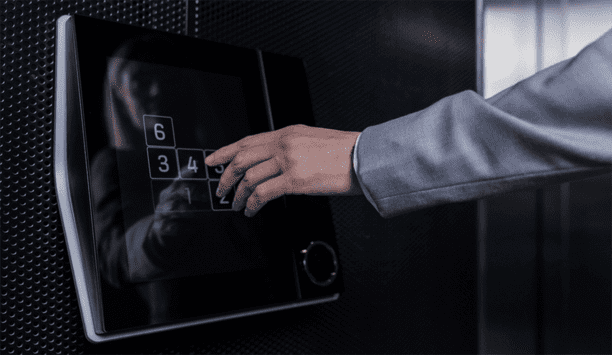
Open Credential Standards And The Impact On Physical Access Control
Download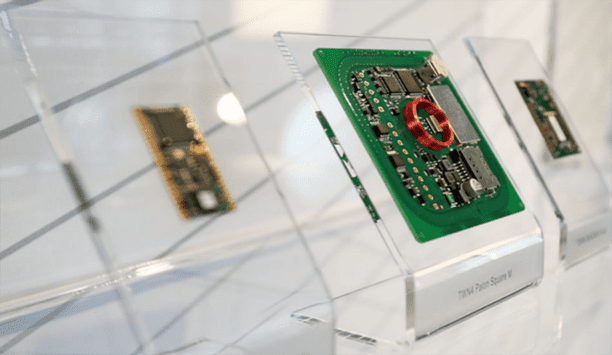
What is a universal RFID reader?
Download
System Design Considerations To Optimize Physical Access Control
Download
The 4 Pillars Of AI In Managing High-Stakes Critical Events
Download
The Power Of Integration In Physical Security Systems
Download
How Biometrics Are Reshaping Security In A Connected World
Download
The Ultimate Guide To Mastering Key Control
Download
Palm Vein Recognition
Download
The Key To Unlocking K12 School Safety Grants
Download
The 2024 State Of Physical Access Trend Report
Download
The Security Challenges Of Data Centers
Download

Videos
Security access systems: Manufacturers & Suppliers
- ABLOY Security access systems
- Vanderbilt Security access systems
- HID Security access systems
- CyberLock Security access systems
- Alpro Security access systems
- Bosch Security access systems
- Hikvision Security access systems
- Software House Security access systems
- CEM Security access systems
- Aiphone Security access systems
- AMAG Security access systems
- Parabit Security access systems
- Honeywell Security Security access systems
- Delta Scientific Security access systems
- CIVINTEC Security access systems
- Aritech Security access systems
- TESA Security access systems
- ASSA ABLOY - Aperio® Security access systems
- Dahua Technology Security access systems
- Nedap AEOS Security access systems

